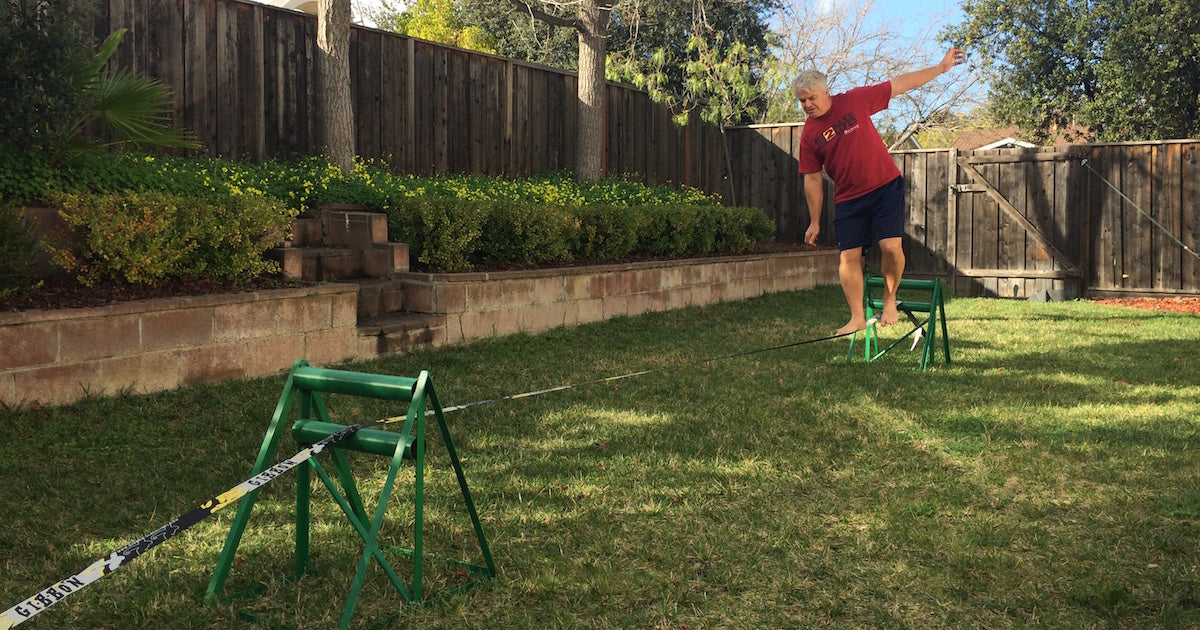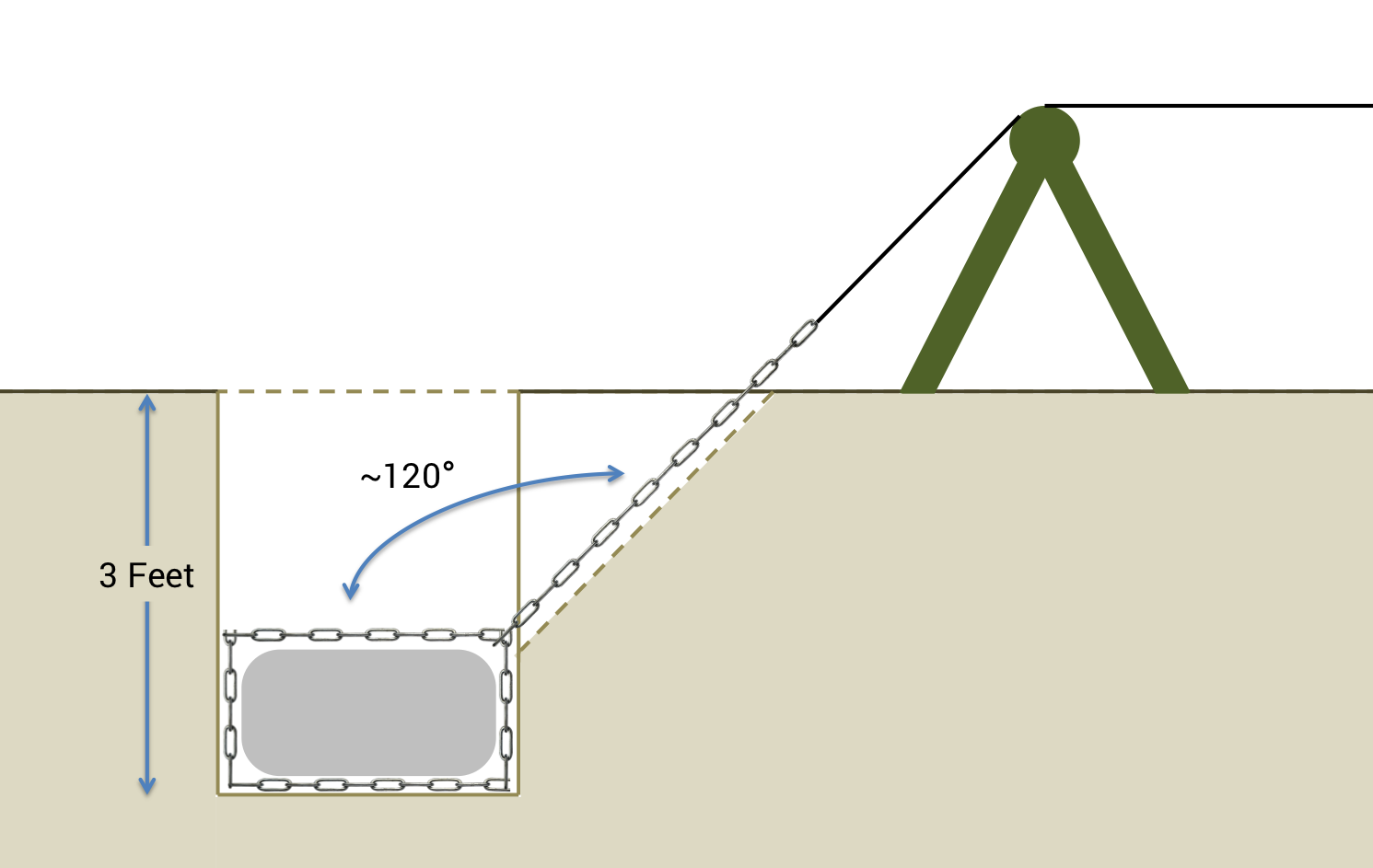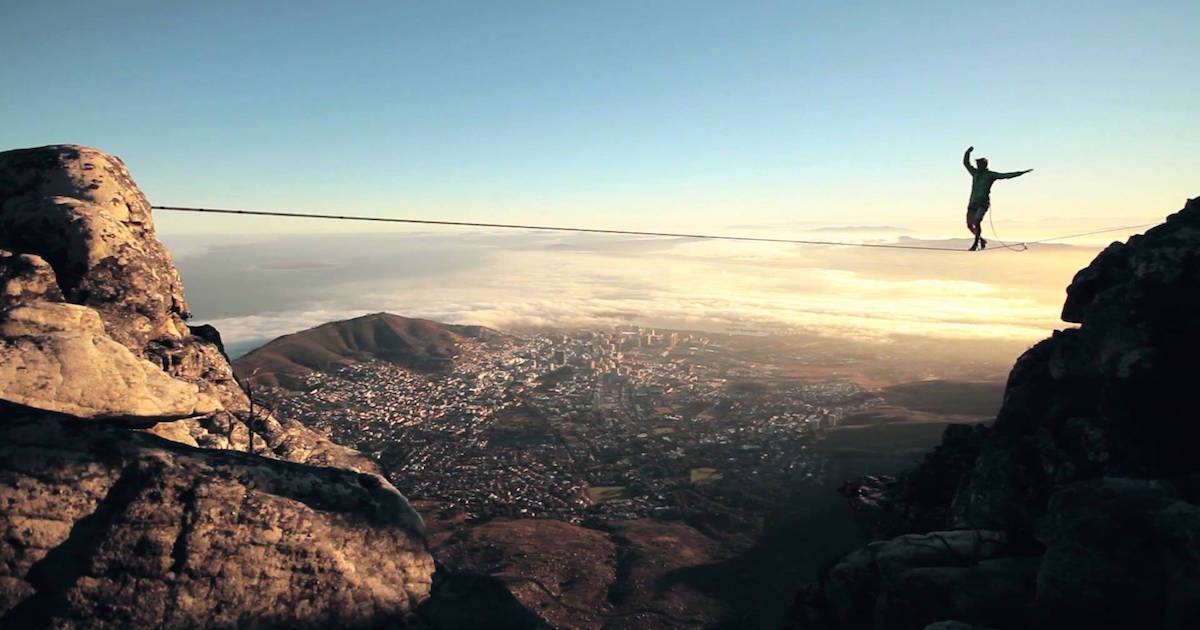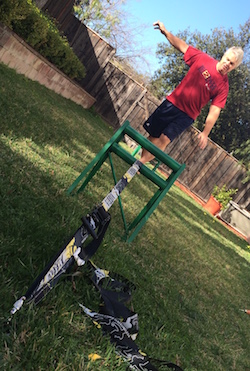
Thanks for your modeling work, dad!
We love lateralization of skills here. And slacklining (think tight-rope walking without the tight) is a great way to build a stronger core, better balance and coordination, and encourage healthy tissue sliding.
Put it outside, and you’re getting some nature time and Vitamin D as well.
I got a slackline (this one, I love it) awhile back, and I was hooked. So I wanted one in my backyard 24/7.
The only problem? I have no trees on my lawn!
You might not either, but it turns out that’s not a problem. Here’s how to build an awesome backyard slackline setup without any trees or posts.
The Basic Premise
Slacklines aren’t meant to be super tight, but they do have some tension when strung up (especially for beginners), and they need to support your body weight plus some jumping/bouncing.
But you don’t need trees to support the load of a slackline. The ground will do just fine, so long as you’re smart about it.

I’ll show you how I did it in a minute, but it’s important to understand the fundamentals of supporting a tension load with soil. The most important thing is to “pull against” as much of the earth as possible.
As you’ll see in a second, I ensured this two ways:
- I tied the chain (that connects to the slackline) around a big bag of concrete. So if the line is going to pull out, it has to drag a big heavy bag through a big cross section of soil.
- I dug out a slot for the chain, so it pulls less vertically. This essentially increases the effective depth of the hole, because my slackline is supported by all the dirt on the hypotenuse of a right triangle. So a 3′ hole gives me more like a 5′ length of soil for support.
You’ll also need some sort of structure to keep the slackline off the ground, and that has to support well over your weight as well.
The Benefits of Slacklining Without Trees
The biggest benefit for me is that it’s the only way I can have a slackline set up all day, every day in my own backyard. But it’s also very nice to be able to easily change the effective length of the line.
When I’m craving that sway, I can put the A-Frames pretty far apart. When I want a nice short stiff line for learning new tricks or teaching friends, I can put them close together for a short effective slackline length. Also, you don’t have to worry about harming trees!
Ok, enough chit-chat, let’s see the design.
The Treeless Slackline Design Schematic
Pretty simple stuff. There’s a chain looped around a concrete bag in a hole (one at each end of the line). The slackline connects to the chains, and runs up and over A-frames to get it off the ground.
Here’s how to do it.
Exactly How to Set Up a Slackline with No Trees
- Dig two holes, at least 3 feet deep, about 15′ further apart than your desired slackline length. Watch out for pipes and wires!
- Put a shackle on the end of an 8′ length of chain. Loop the chain around the skinniest part of the concrete bag as tight as you can, and connect it to itself with the shackle.
- Dig out a slot for the chain, so it comes up at roughly 120 degree angle.
- Drop the bag-on-a-chain to the bottom of the hole, with the shackle as close as possible to the hole side of the chain slot.
- Lay the chain in the slot.
- Hose down the bag, and fill in the hole and slot with the dirt you took out.
- Repeat for the other hole.
- Make or buy some sort of A-frame for each end. You want them at least 20″ tall, but not so high that straddling the slackline puts future reproductive success in jeopardy.
- Connect the slackline to the chains with shackles or strong carabiners, and ratchet it tight.
- Have a ton of “balanced” slackline fun – no trees necessary!
Optimal Slackline Chains
When buying chain for your treeless slackline setup, the two most important things to look for are lifting strength and corrosion resistance. It needs to be strong enough to support the slackline tension plus 3-4x your weight, and it can’t rust away in the often damp soil of your lawn.
Here’s what the above-ground portion should look like at each end (this is a shackle, a carabiner will work fine too if it’s strong enough):
I recommend this chain (quantity 2) and 4 of these shackles (or these carabiners). This is not something you want to skimp on. Both can be purchased at a hardware store as well.
The A-Frames – Build Them!
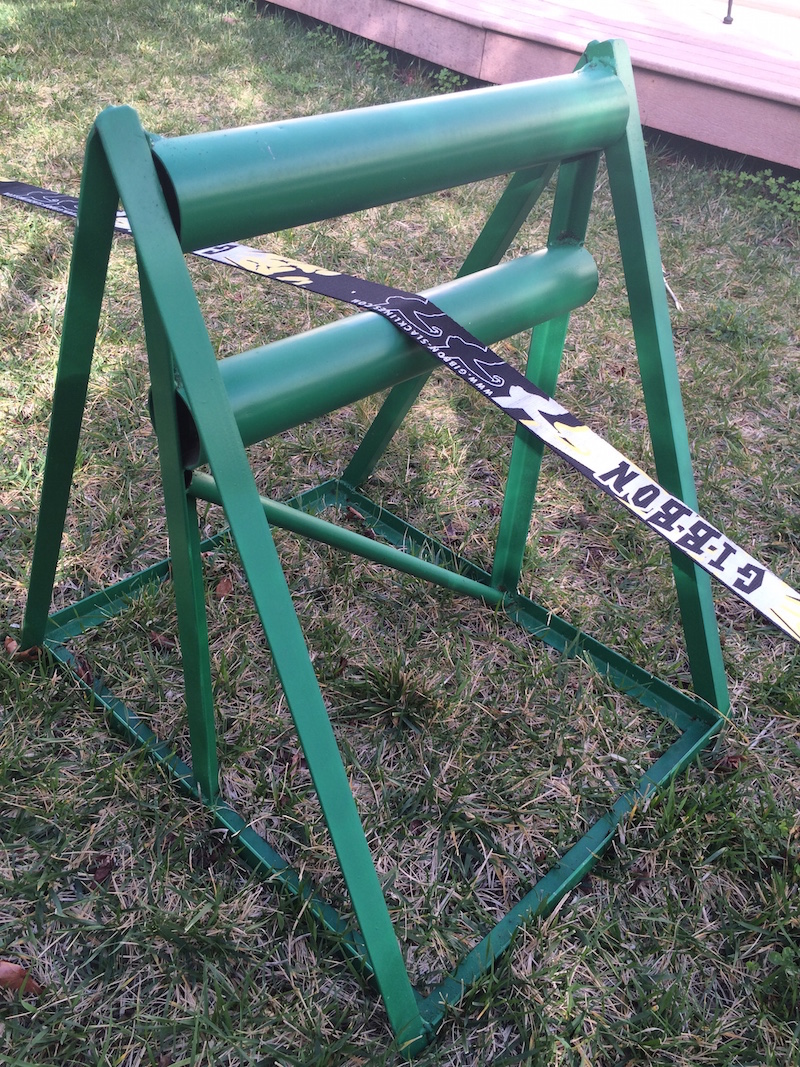 I fancy myself quite the amateur welder, and I had tons of scrap metal lying around, so I made my own (with two different height settings – fancy!).
I fancy myself quite the amateur welder, and I had tons of scrap metal lying around, so I made my own (with two different height settings – fancy!).
If you know what you’re doing with metal or wood (including how to treat it for the year-round outdoor environment), go ahead and make your own. I recommend building it solid enough that you can comfortably jump up and down on top of it.
Not a builder? Then I’m not sure what would work best.
You can try stacking stuff up. Cinder blocks would be a pain to move around, and you’d have to do something to round the edges so the slackline doesn’t fray and tear. I’d also be a little concerned about them falling over.
If you want to buy one instead, there’s nothing that’s really ideal. If forced, I’d get two of these. A little on the weak side for my taste at 300lb max load, and you might have to put wood under the feet to keep them from sinking, but it would probably work.
Final Word – Setting Up A Slackline with No Trees
Here’s the recommended materials in one handy list:
- 50-80lb concrete bags (the bigger, the better)
- Strong chain (you’ll want two 8′ lengths, minimum)
- 4 Strong shackles or carabiners
- A-Frames
If you’ve slacklined before, you know exactly why I wanted mine set up on nice flat grass 24/7. It is addictive, and a great way to get some sun on your lunch break.
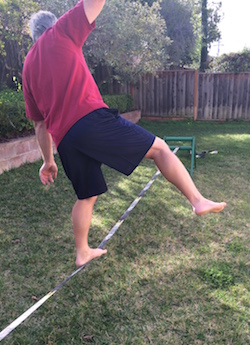 For those of you who haven’t – get one and play around before you dig up your backyard. I recommend the 52′ Macaco Slackline. It’ll work great, it’s very fairly priced, and all the components will withstand being outdoors around the clock.
For those of you who haven’t – get one and play around before you dig up your backyard. I recommend the 52′ Macaco Slackline. It’ll work great, it’s very fairly priced, and all the components will withstand being outdoors around the clock.
I have heard that the Baseline is great as well, and easier to learn on (get the 50′ size, it’s plenty).
You may find it frustrating at first, but if you keep at it, you’ll improve quickly and really love it.
My advice for the newbies? Start with the line low, short, and tight.
Now get out and have some fun!
Anything to add? Have you made your own slackline setup without trees or posts? Let us know in the comments.
****DISCLAIMER**** I am not a slackline expert or civil engineer. If you do any of this stuff, it’s at your own risk.

